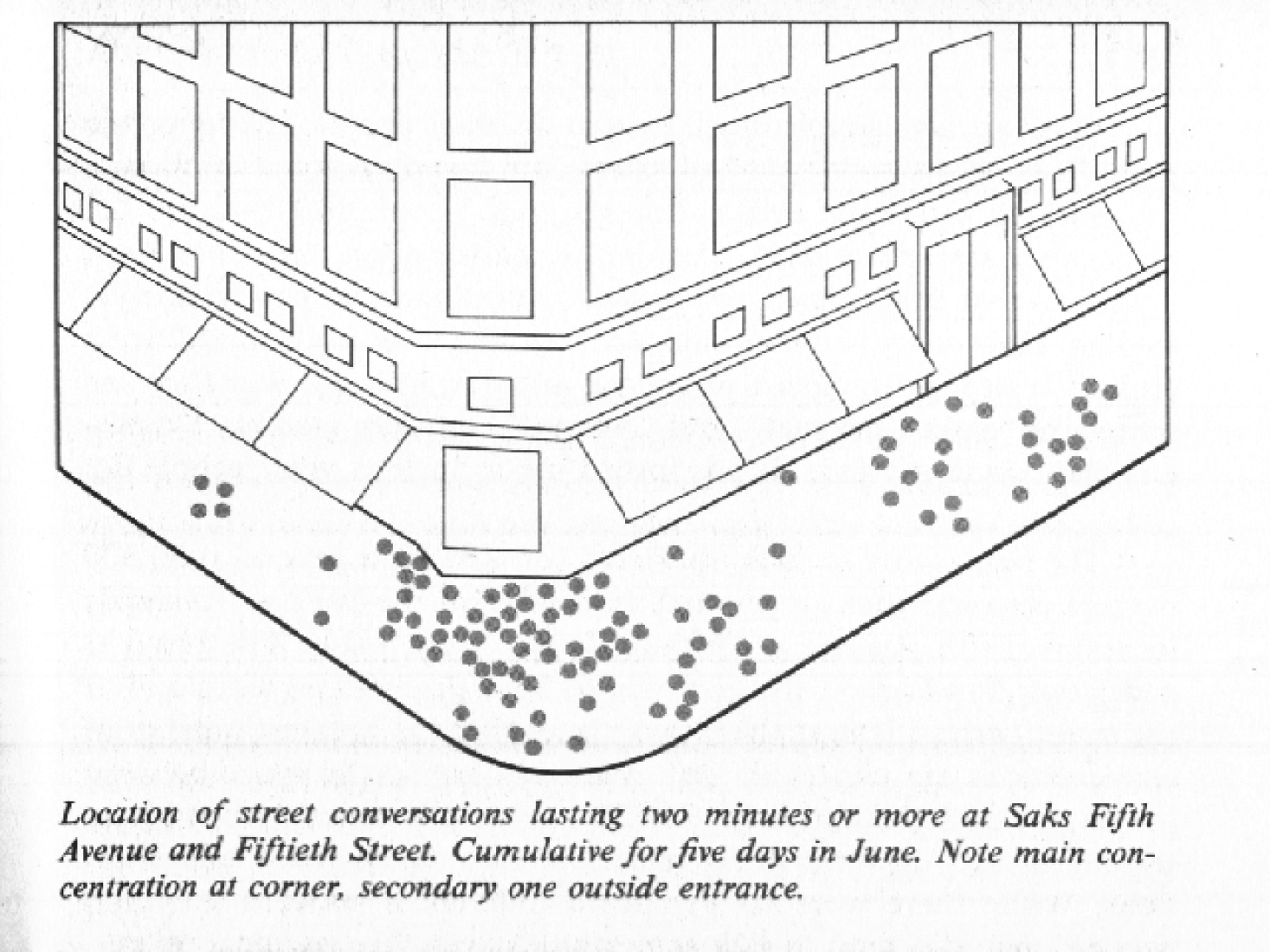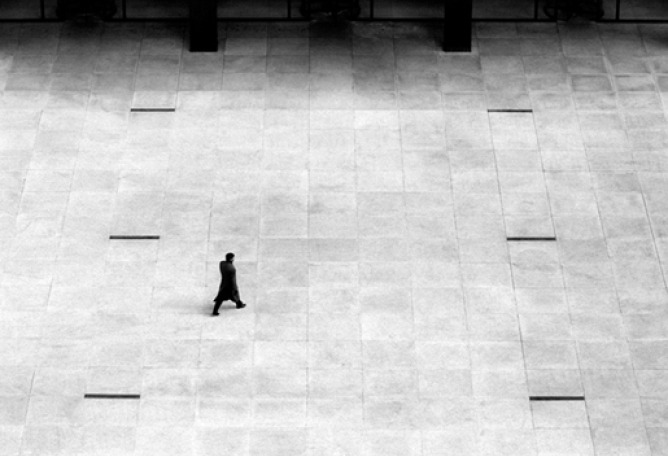Via an article by Kio Stark over at the The Atlantic.
William Hollingsworth "Holly" Whyte (1917 – 12 January 1999) was an American urbanist, organizational analyst, journalist and people-watcher.
While working with the New York City Planning Commission in 1969, Whyte began to use direct observation to describe behavior in urban settings. With research assistants wielding still cameras, movie cameras, and notebooks, Whyte described the substance of urban public life in an objective and measurable way.
These observations developed into the "Street Life Project", an ongoing study of pedestrian behavior and city dynamics, and eventually to Whyte's book called City: Rediscovering the Center (1988). "City" presents Whyte's conclusions about jaywalking, 'schmoozing patterns,' the actual use of urban plazas, appropriate sidewalk width, and other issues. This work remains valuable because it's based on careful observation, and because it contradicts other conventional wisdom, for instance, the idea that pedestrian traffic and auto traffic should be separated.
Whyte also worked closely with the renovation of Bryant Park in New York City.
Whyte served as mentor to many, including the urban-planning writer Jane Jacobs, Paco Underhill, who has applied the same technique to measuring and improving retail environments, Dan Biederman of Bryant Park Corporation, who led the renovation of Bryant Park and the Business Improvement District movement in New York City, and Fred Kent, head of the Project for Public Spaces.
His other books include: Is Anybody Listening? (1952), Securing Open Spaces for Urban America (1959), Cluster Development (1964), The Last Landscape (1968; "about the way metropolitan areas look and the way they might look"), The Social Life of Small Urban Spaces (1980; plus a companion film of the same name in 1988), and City: Rediscovering the Center (1988).





















